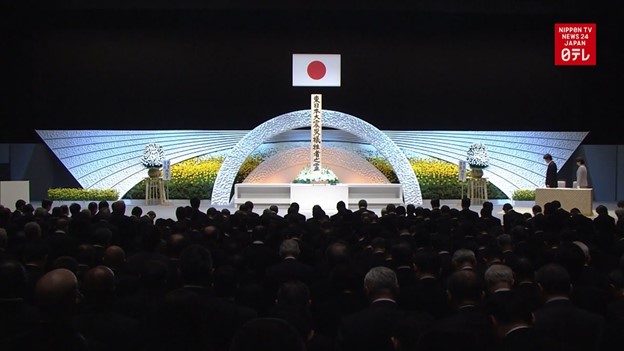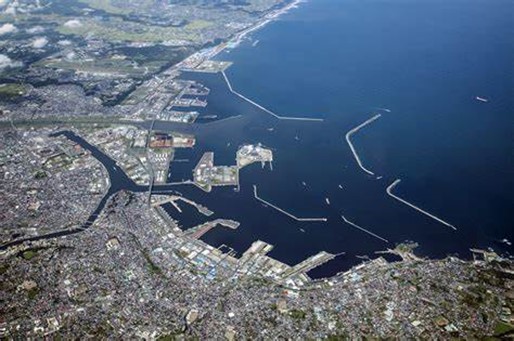Recent Posts
The Power of the Sea – From Tsunami to Tidal Energy, Japan 10 years On
Blog Post by: Nigel James Director, Master Mariner
April 15, 2021

Japan Tsunami Memorial Service – Image Nippon News
Having been involved with responding to and working on marine casualties for many years, people sometimes ask me “what was the most memorable incident you have attended?” I have worked on some of the most challenging salvage and wreck removal operations ever undertaken around the world, including three years spent working in Italy on the wreck removal of the “Costa Concordia” between 2012 and 2014, if they know me, they usually anticipate that operation to be the answer.
While all operations have their unique challenges to overcome and undoubtedly the “Costa Concordia” wreck removal was challenging, the most memorable for me was the salvage of a far less well-known vessel, the “Pac Athena”. I attended and worked on this salvage operation in the aftermath of the devastating tsunami in Japan in 2011, with a former colleague and friend Peter Holloway, who has sadly passed away recently.
The “Pac Athena”, a bulk carrier, was discharging cargo alongside in the port of Hachinohe, in northern Japan, at the grain terminal when the magnitude 9 earthquake struck the port on the 11th of March 2011. The port’s power supply immediately failed during the first tremors of the earthquake, and the Vessel was stuck alongside at the grain terminal with the cargo hatches open and the grain elevators, used for lifting and discharging the cargo, left trapped down inside the open cargo holds, so there was not even the possibility of closing the hatches as the crew awaited the tsunami, with the sirens going off.
The offshore earthquake generated a tsunami over 10 meters high, killing 15,900 people and with 2,525 others remaining unaccounted for all along the Japanese coast, creating a nuclear catastrophe in Fukushima. On Thursday last week, I stopped once again, for a few moments, to remember them and the work we did to successfully salvage the “Pac Athena”, and in a very small way, help the people of Japan recover in the aftermath of such a devastating seismic event.
The Vessel was trapped in the port and caught alongside as the tsunami hit, completely overwhelming the substantial sea defences at Hachinohe. The Vessel was eventually ripped off the berth, taking all the shoreside terminal grain elevators with it, and as the elevators and quayside infrastructure came crashing down across the Vessels main deck, the Master and crew fought bravely and did everything possible to save their Vessel and themselves for many hours.
The tsunami waves, wave after wave, overwhelmed the port defences and washed the disabled Vessel around in the dock, like a giant washing machine for nearly eight hours, before they eventually came to rest, severely damaged, with breached and flooded cargo holds and their two anchor chains tied together in knots.
At different stages during the tsunami, the crew found themselves either sitting in the mud on the bottom of an empty dock, with no water in it at all, and later with their Vessel actually sitting on top of the inner breakwaters shown in the photo below, before being washed back into the dock again by the next waves. While the Vessel was very severely damaged, most importantly, all the crew survived, and all were unhurt.
Attending the severely damaged Vessel, with the port side infrastructure completely destroyed, many of the smaller coastal vessels that were also in the port were to be found hundreds of meters inland. With the entire contents of the local container terminal washed into the dock, arriving on-site to start work was certainly memorable, but also an extremely humbling experience, as I witnessed first-hand the stoic and calm resolve of the Japanese people in mourning. Everybody I met in Japan, had not one word of complaint, and they were just grateful that we were there to help.

Hachinohe Port – Image Bing
Working on-site on behalf of the Owners and their P&I Club, with Fukada Salvage and Posh Semco, we worked for many weeks to successfully salvage the Vessel, patching it up as best we could in the dock, and preparing it for a manned ocean towage operation to China, where the Vessel was successfully repaired and put back into full service.
Admittedly, this was the only salvage or wreck removal operation where the close monitoring of the wind direction took on a whole new perspective, as we were monitoring the nuclear radiation fallout cloud from the nuclear reactor plant at Fukushima, which had been destroyed by the tsunami to the south of our position. This all became just an essential part of our daily routine during the salvage operations, as we overcame the challenges involved in undertaking this successful salvage and subsequent ocean towage, to both save the Vessel and help to clear the port.

MV Pac Athena – Image Bing
I am not prone to talking or writing about my pervious casualty experiences, in fact it is something that I generally avoid, but there were a few reasons for wanting to write this short article today. The ten-year anniversary of such a devastating event in Japan, which has passed almost unnoticed throughout the rest of the World, as we continue to struggle with the COVID-19 pandemic. The passing of Peter, and the pride I felt this year, in the way that Waves Group were able to contribute as Marine Warranty Surveyors (MWS) to the successful installation of the very first sub-sea tidal turbine in Japan.
It seemed a poignant reminder of the power of the sea and reflecting upon the destructive power of the sea during the events in 2011, they seemed in stark contrast to what we have just achieved this year in 2021, ten years later, bringing renewable clean energy to the Japanese people with that same power.
Harnessing the power of the sea and continuing our relationship with Simec Atlantis, following the installation and maintenance of the MeyGen tidal stream project over the last few years off the north coast of Scotland in the Pentland Firth, I am pleased to have been given the opportunity to be involved in the success of this latest project.

The turbine was installed on the 23rd of January 2021 offshore Goto Island, Japan and has already started power generation. The system will initially be operating at a capped maximum generation output of 500kW to collect performance and environmental data.
Waves Group provided MWS services for the review and approval of the transportation and installation procedures for the project and installation of the AR500 tidal stream generator, along with the associated subsea cables. We also provided a surveyor onsite at Nagasaki harbour to witness the loadout and seafastening of the equipment required onboard the “Grand Canyon II” and to witness preparations for commencement of the installation operations.
For further information about our marine casualty response, salvage, wreck removal and renewable energy capabilities, please contact mail@waves-group.co.uk.

